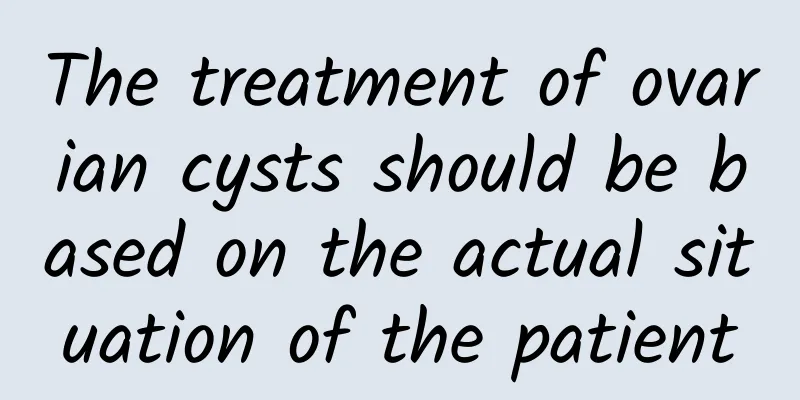Ten key points to prevent pelvic inflammatory disease

|
I believe everyone knows how much harm pelvic inflammatory disease brings to our health, so we must do our best to prevent pelvic inflammatory disease . What are the key points to prevent pelvic inflammatory disease? Let's take a look at the prevention of pelvic inflammatory disease. 1. Eliminate all routes of infection. To prevent pelvic inflammatory disease, keep the genitals clean and dry. Wash the vulva with clean water every night. Do not use your hands to wash the vagina, and do not use hot water or soap to wash the vulva. During pelvic inflammatory disease, the amount of leucorrhea is large and sticky, so change your underwear frequently and do not wear tight or synthetic underwear. 2. If there is vaginal bleeding during menstruation, after abortion, and after gynecological surgery such as IUD insertion and removal, you must refrain from sexual intercourse, swimming, tub baths, and saunas. You must change sanitary napkins frequently. As this will reduce the body's resistance, pathogenic bacteria can easily take advantage of the opportunity to enter and cause infection. 3. Patients diagnosed with acute or subacute pelvic inflammatory disease must follow the doctor's advice and actively cooperate with the treatment. Patients must rest in bed or take a semi-recumbent position to facilitate the localization of inflammation and the discharge of secretions. For the prevention of pelvic inflammatory disease, patients should not be too tired, and should combine work and rest, and moderate sexual intercourse to avoid worsening symptoms. 4. Fever patients usually sweat more when the fever subsides. To prevent pelvic inflammatory disease, you should pay attention to keeping warm and keeping the body dry. Change clothes after sweating and avoid air conditioning or direct convection wind. 5. Pay attention to the amount, quality, color and taste of leucorrhea. If the amount of leucorrhea is large, the color is yellow and thick, and it has a foul smell, it means that the condition is serious. If the leucorrhea changes from yellow to white (or light yellow), the amount changes from large to small, and the taste tends to be normal (slightly sour), it means that the condition has improved. 6. Patients with acute or subacute pelvic inflammatory disease should maintain smooth bowel movements and observe the characteristics of their stools. If pus is seen in the stool or there is a feeling of urgency and heaviness in the abdomen, they should go to the hospital immediately to prevent the pelvic abscess from rupturing the intestinal wall and causing acute peritonitis. 7. Some patients who suffer from chronic pelvic inflammatory disease take antibiotics on their own when they feel a little uncomfortable. Long-term use can cause vaginal flora disorder, which can increase vaginal secretions and appear as white bean curd-like leucorrhea. At this time, you should go to the hospital immediately to rule out fungal vaginitis. 8. Patients with pelvic inflammatory disease should pay attention to diet and nutrition. During the fever period, it is advisable to eat light and easily digestible food. Patients with high fever and loss of body fluid can be given pear juice, apple juice, watermelon juice, etc., but they should not be drunk after ice. Patients with yellow, heavy and thick leucorrhea are damp-heat syndrome, and should avoid fried, greasy and spicy food. Patients with lower abdominal cold pain, fear of cold, and back pain are cold-stagnation and qi-stagnation type, and can be given warm foods such as ginger soup, brown sugar water, and cinnamon meat. Those with five-heart heat and back pain are mostly kidney yin deficiency, and can eat meat and eggs, which are bloody and emotional products to nourish and strengthen. 9. Do a good job of contraception and minimize the trauma of artificial abortion. Strictly follow aseptic operation during the operation to avoid the invasion of pathogens. 10. Patients with chronic pelvic inflammatory disease and abdominal masses can be treated with Chinese medicine retention enema, with very good results. It has the effects of promoting blood circulation and removing blood stasis, softening and dispersing nodules, clearing away heat and detoxifying, or warming the uterus and dispersing cold. The ten points emphasized above are about the prevention of pelvic inflammatory disease. I hope you can spend as much time as possible to learn the prevention of pelvic inflammatory disease introduced by the experts here today. As long as you master these preventions of pelvic inflammatory disease, you can keep the disease away from you. Here I would like to wish all patients a speedy recovery. |
<<: What are the specific manifestations of the harm of pelvic inflammatory disease?
>>: Detailed analysis of the six diagnostic methods for pelvic inflammatory disease
Recommend
Every time I have back pain, I have abnormal vaginal discharge
Lower back pain accompanied by abnormal vaginal d...
What is pelvic effusion? What causes pelvic effusion?
Pelvic effusion is one of the common gynecologica...
Which hospital is better for treating uterine effusion?
The number of hospitals treating uterine effusion...
Nomiting is off the market, only one legal weight loss drug remains
What are the currently legal weight loss drugs? T...
How to treat uterine fibroids 0.60.8?
How to treat uterine fibroids 0.60.8? Uterine fib...
When your period is about to "leave", your body will give you 5 tips to help you safely and smoothly go through menopause
Ms. Li, 47 years old, sat in the chair opposite m...
What are the symptoms after abortion of hydatidiform mole?
If persistent vaginal bleeding or abdominal pain ...
What are the common manifestations of uterine fibroids?
Uterine fibroids are the most common benign tumor...
Which hospital should I go to for grade 3 cervical precancerous lesions?
A regular hospital for the treatment of diseases ...
Tocopherol helps you lose weight! Musk grape seed oil has a set
If you want to lose weight, the thing you fear mo...
What are the common symptoms of uterine fibroids? What are the dangers of not treating uterine fibroids?
In recent years, the incidence of uterine fibroid...
Detailed analysis of the six diagnostic methods for pelvic inflammatory disease
Pelvic inflammatory disease has been on the rise ...
What are the reactions to medical abortion? You will know after reading this
Many women choose medical abortion after they bec...
5 bowls of calories are equal to 1 bowl of rice! The popular "cauliflower rice" abroad
White rice is a staple food for many people for t...
Bacterial vaginosis can recur if not treated promptly
Nowadays, more and more people may suffer from ba...









